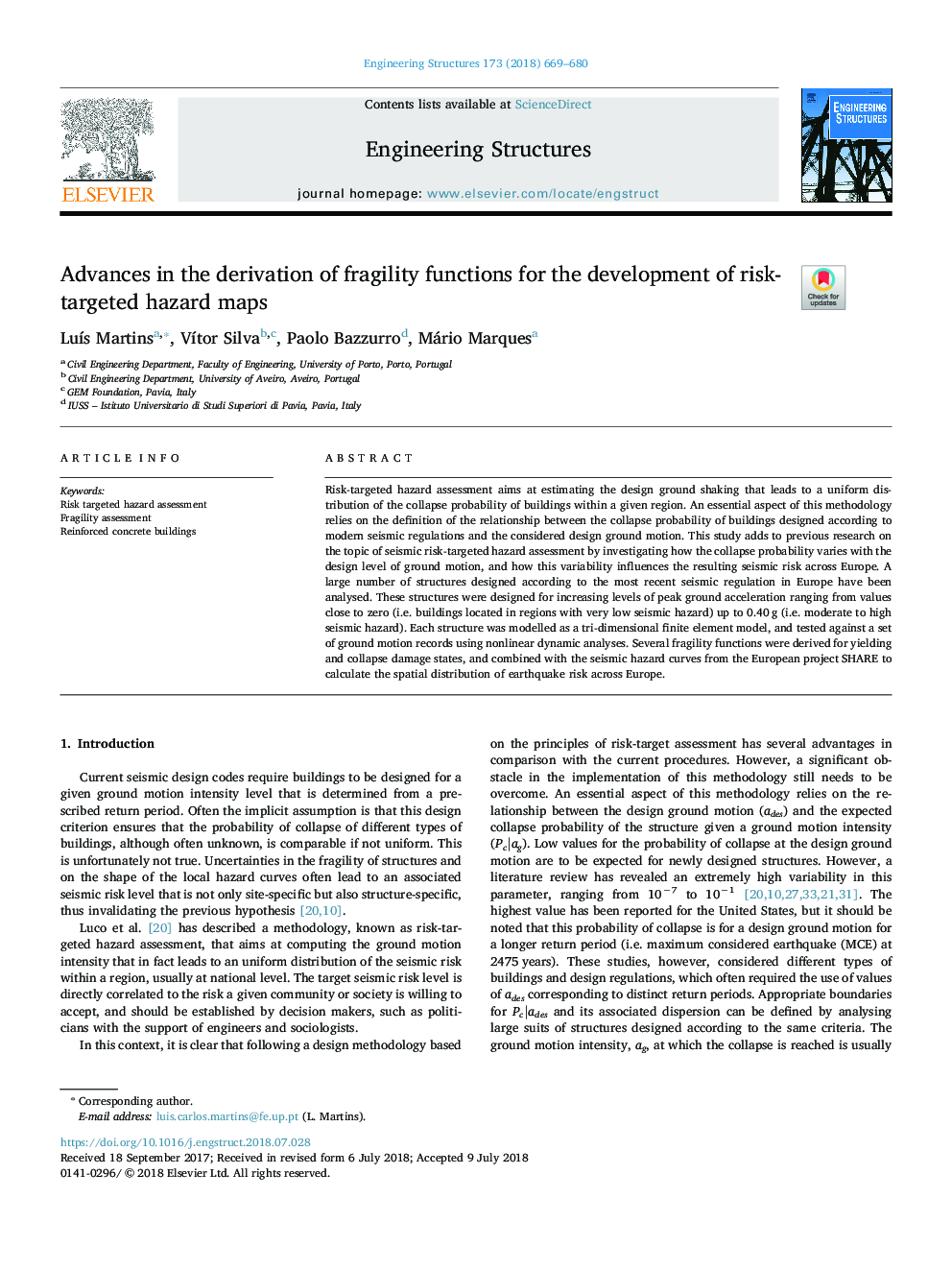| Article ID | Journal | Published Year | Pages | File Type |
|---|---|---|---|---|
| 6735704 | Engineering Structures | 2018 | 12 Pages |
Abstract
Risk-targeted hazard assessment aims at estimating the design ground shaking that leads to a uniform distribution of the collapse probability of buildings within a given region. An essential aspect of this methodology relies on the definition of the relationship between the collapse probability of buildings designed according to modern seismic regulations and the considered design ground motion. This study adds to previous research on the topic of seismic risk-targeted hazard assessment by investigating how the collapse probability varies with the design level of ground motion, and how this variability influences the resulting seismic risk across Europe. A large number of structures designed according to the most recent seismic regulation in Europe have been analysed. These structures were designed for increasing levels of peak ground acceleration ranging from values close to zero (i.e. buildings located in regions with very low seismic hazard) up to 0.40â¯g (i.e. moderate to high seismic hazard). Each structure was modelled as a tri-dimensional finite element model, and tested against a set of ground motion records using nonlinear dynamic analyses. Several fragility functions were derived for yielding and collapse damage states, and combined with the seismic hazard curves from the European project SHARE to calculate the spatial distribution of earthquake risk across Europe.
Related Topics
Physical Sciences and Engineering
Earth and Planetary Sciences
Geotechnical Engineering and Engineering Geology
Authors
LuÃs Martins, VÃtor Silva, Paolo Bazzurro, Mário Marques,
